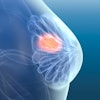A tablet PC employed with a wireless network can serve as an effective tool at easing image distribution to clinicians in bedside/acute situations, according to researchers from the department of radiology at University Hospital Essen in Germany.
"Using mobile devices greatly improves acceptance of IT systems in medicine, not only PACS," said Dr. Peter Gocke, formerly of the University Hospital Essen. Now CIO at the Universitätsklinikum Hamburg-Eppendorf in Hamburg, Germany, Gocke presented the team’s research during a scientific session at the 2003 RSNA meeting in Chicago.
The onset of PACS has dramatically changed the process of image distribution, making films and reports available at all times and providing different clinicians with parallel access to studies. However, clinicians can only access images where a PC is available, a task that can be complicated in bedside situations, Gocke said.
In an attempt to improve that situation, the University Hospital Essen initially tested providing access to clinical/image data using mobile devices powered by Transmeta’s Crusoe microprocessor. Full-scale DICOM images were preloaded onto the device, which were then carried on rounds.
The results were disappointing, however, Gocke said. Clinicians complained about the different software between the wireless device and the desktop PC, and the devices were too slow for handling images.
"And (the clinicians) always demanded images that were not preloaded," Gocke said.
So the hospital switched gears and went with a new approach, abandoning the pre-loading concept. Using configured tablet PCs running a special version of Windows XP, the institution implemented a system that provided wireless, on-demand access to images and reports on its Web server, without accessing massive DICOM image files that are taxing on the small mobile devices, Gocke said.
The new hardware weighed less, was more powerful, and had longer battery life.
From his institution’s experience, Gocke recommends that the mobile device should have enough screen space to view images, have resolution of 1,000 x 700 pixels, and a battery life of greater than five hours. It should also weigh less than 1.5 kilograms (3.3 pounds), he said.
The hospital’s wireless local-area network (WLAN) included WiFi IEEE 802.11 a/b/g access points at selected wards. Of course, security is a key consideration in any wireless implementation, Gocke said.
Service set identifier (SSID) broadcasting should be disabled, as should dynamic host configuration protocol (DHCP), Gocke said. MAC addresses should be restricted, and 128-bit wired equivalent privacy (WEP) should be implemented, he said.
Other necessary precautions include limiting access to the access point, client authentication procedures, a virtual private network (VPN), and a firewall with intrusion detection, Gocke said. Security issues are important, but are not limiting, he said.
"Even with limited support of current viewing software for handwriting recognition, mobile image access by tablet PCs is a success," he said. "Current mobile hardware is sufficient for use in daily routine."
By Erik L. RidleyAuntMinnie.com staff writer
March 23, 2004
Related Reading
Security strategies for wireless technology, June 10, 2003
Filmless ED can open the door for enterprise-wide PACS, May 9, 2003
Wireless Internet lines offer speedy alternative for imaging centers, September 3, 2002
Wireless not yet secure enough for prime time, May 6, 2002
Copyright © 2004 AuntMinnie.com




















